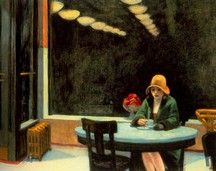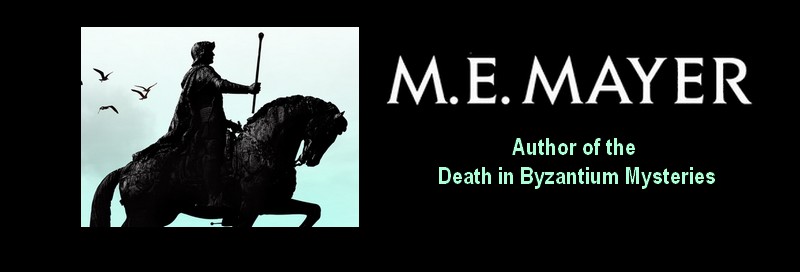STICK FIGURES TO SCHIELE
 One of the great things about the Internet is the amount of artwork on display. I could never afford coffee table books full of reproductions and rarely had the opportunity to visit museums or galleries, but today, thanks to endless web galleries, my computer desktop displays a rotating art show featuring paintings by Edward Hopper, Andrew Wyeth, Pierre Bonnard, Egon Schiele, Gustav Klimt, and many more. Yes, I admit that I even have some non-classical works such as Weird Tales covers by Margaret Brundage.
One of the great things about the Internet is the amount of artwork on display. I could never afford coffee table books full of reproductions and rarely had the opportunity to visit museums or galleries, but today, thanks to endless web galleries, my computer desktop displays a rotating art show featuring paintings by Edward Hopper, Andrew Wyeth, Pierre Bonnard, Egon Schiele, Gustav Klimt, and many more. Yes, I admit that I even have some non-classical works such as Weird Tales covers by Margaret Brundage.
My taste in art, like my taste in literature, is rather conservative -- some might say backward looking. I prefer figurative to abstract. I like impressionism. I enjoy the realistic tour de forces of Alma-Tadema and other Victorians. The work of the Pre-Raphaelites fascinates me. I prefer a picture that tells a story, which is probably why I never aspired to be an artist.
Not that I haven't dabbled in art. I was always well supplied with paper and crayons, not to mention pencils, pens, paints, pastels, and charcoal. As a kid I spent almost as much time drawing as playing in the backyard. Often my friend from next door would come over and instead of re-enacting the Gunfight at the O.K. Corral again we'd sit on my grandparents' porch and draw endless cartoon stories -- featuring plenty of guns and bombs -- on the rolls of adding machine paper my grandfather brought home from work. Those stories would keep getting longer and more exciting and violent until the long strips of uncoiling adventures began to flap in the passing breezes.
I had drawn stories long before I learned the alphabet. When I became proficient at writing I added captions to my drawings or word balloons. Instead of learning the multiplication tables I'd sit in the back of the classroom and draw cartoons for my buddies, including plenty of guns and bombs.
There were periods in my youth when I thought I might be an artist but I was never much good at drawing, nor was I inclined to work at it very hard. I have always liked drawing birds because they don't have those dreadfully complicated hands (now let's see, looking at the hand like that, which side should the thumb be on?) or even mouths to get wrong. For a couple of years I produced stick figure "mini-comics'. (More than twenty-five years ago -- long before XKCD -- amateur comics enthusiasts were employing stick figures, which allowed even those who couldn't draw to make comics.)
I came to realize that I was not interested in visual art for itself but only as a means to say things that were better -- and in my case more easily -- expressed in words. I was better served practicing my writing rather than my drawing.
There is a lot written about the "meaning" of books and paintings and other art forms, as if the works themselves are a sort of complicated shell within which the artist has concealed what he wants to express in such a way that it needs to be winkled out by experts. But if the purpose of a novel or a painting was to say something that could be said in a paragraph then the author would have written that paragraph instead of the novel and the painter would have placed himself in front of a keyboard rather than an easel.
Paintings are in large part about what we see -- form, color, light. Just as music is about sound. Writing about a painting in words gives the impression that the painting is about something that could have been expressed in words, which is misleading. Abstract paintings are purely visual, which is probably why I prefer paintings with some lingering attachment to real objects. In a Hopper I can find a bit of the literal element -- the story -- that attracts me, to go along with the visual. I cannot enjoy a visual experience much when it is entirely unhinged from any literal interpretation.
I have read psychological analyses of Hopper's works, often stressing the sense of loneliness and isolation, and while there is likely some truth to this I suspect Hopper was much more concerned with shapes and light, even in those paintings which feature human figures.
Probably I project more literal meaning onto the works of Hopper and other figurative painters than they intended. That's because I am literal minded. I am story oriented. Had I chosen to pursue art I could only have been an illustrator and the role of the illustrator is diminished in these days of cameras and computers anyway. Deciding to write was a good choice. But I think that my artistic upbringing and inclinations sometimes help me visualize the sixth century world Mary and I write about. Or at least I hope so.
